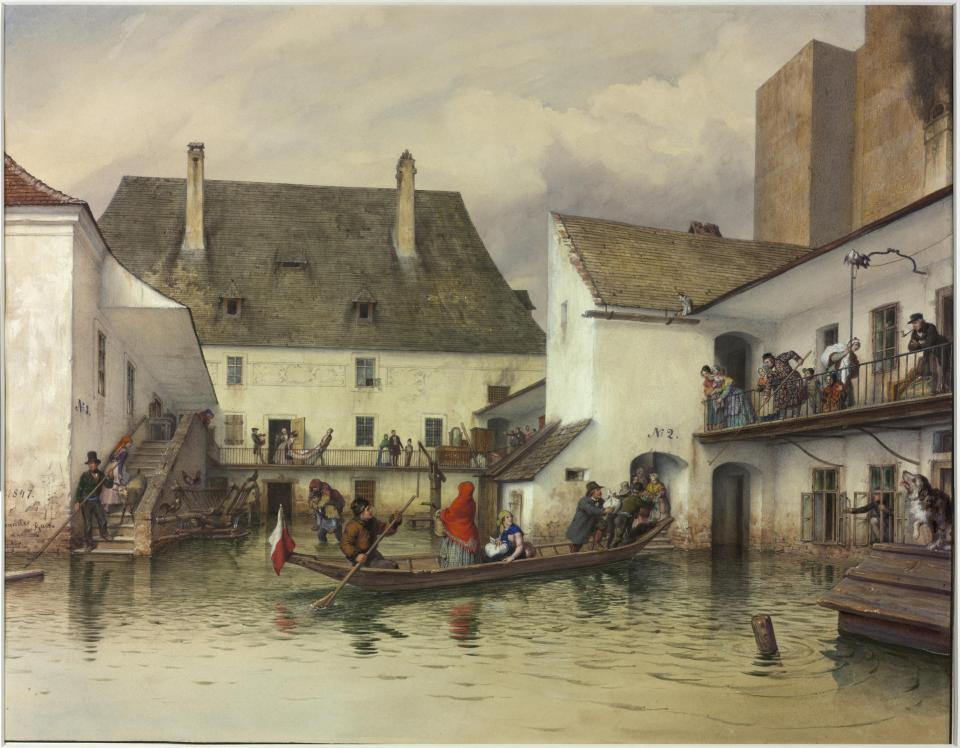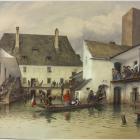
Viennese city dwellers get rescued after massive floodings in 1847.
Viennese city dwellers get rescued after massive floodings in 1847.
Painting by Leander Russ, 1847.
© Österreichische Nationalbibliothek, Bildarchiv Austria, Vienna (ONB/Wien Bildarchiv Pk 3.662).
Used by permission.
The copyright holder reserves, or holds for their own use, all the rights provided by copyright law, such as distribution, performance, and creation of derivative works.
This image appears in: Neundlinger, Michael. “Disaster Ahead: How Danube Floods Created Telegraph Networks.” Environment & Society Portal, Arcadia 2012, no. 7. Rachel Carson Center for Environment and Society. http://www.environmentandsociety.org/node/3747.
Rivers flood, some more regularly than others. The more infrastructure humans construct in floodplains, the more vulnerable to extreme hydrological events they become. Thus, when Danube floods hit Vienna, a Habsburg residence and the most important city of the monarchy, its waters regularly swept over lower parts of the city center and its expanding suburbs. High floods, such as the Allerheiligengieß in 1787 or the great flood of 1847, arrived without warning. They caused massive damage to urban infrastructure and shocked residents. Protection measures, such as dykes, were destroyed and washed away by the force of the swollen river. During the most intense floods of the eighteenth and nineteenth centuries, city dwellers time and again had to retreat to their rooftops to save their lives, as reported in contemporary media.
—Michael Neundlinger
Read more here.


